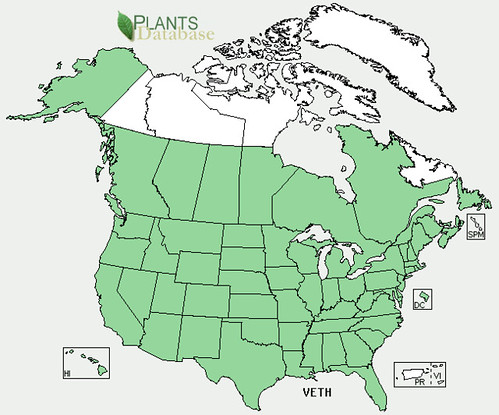Abundance: uncommon
What: leaves, flowers
How: both leaves and flowers as tea and smoked
Where: dry, sunny areas
When: summer, fall
Nutritional Value: medicinal
Other Uses: dried stalks used for fire drills, leaves used as lamp wicks,
Dangers: fine hairs on leaves can be an irritant. Do not consume seeds.
Medicinal Summary:
Flowers/Leaves/Stems - improves respiratory issues and inflammations; anti-inflammatory; antimicrobial; expectorant; soothes earaches (tisane, tincture, infused oil, smoked)
2nd-year Mullein plants.

2nd-year Mullein gone to flowering.

1st-year Mullein plant

Close-up of flowers


Close-up of leaves

Mullein root.

Dried mullein stalk.

Close-up of dried mullein flowers/stalk.

Texas distribution, attributed to U. S. Department of Agriculture. The marked counties are guidelines only. Plants may appear in other counties, especially if used in landscaping.

North American distribution, attributed to U. S. Department of Agriculture.

Mullein tea is made from the leaves of a 1st-year plant and is considered a good cough suppressant. A similar tea can be made from the root after cleaning, peeling, and dicing. Although the leaves feel soft and fuzzy they do not make good "wild" toilet paper as the small hairs can get stuck in your skin which is very uncomfortable.
The dried leaves were smoked to help with assorted head/chest sickness. The dried flowers have a pleasant flavor.
Avoid consuming the seeds as they contain Rotenone, a poisonous material that is particularly bad for fish and other plants.
Buy my book! Outdoor Adventure Guides Foraging covers 70 of North America's tastiest and easy to find wild edibles shown with the same big pictures as here on the Foraging Texas website.

